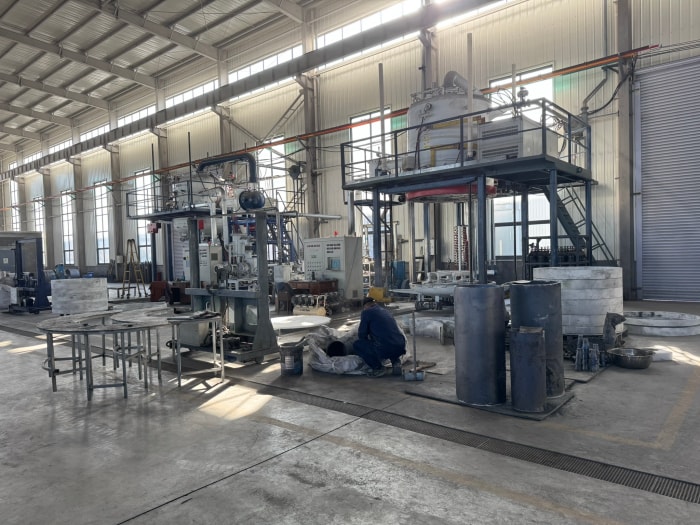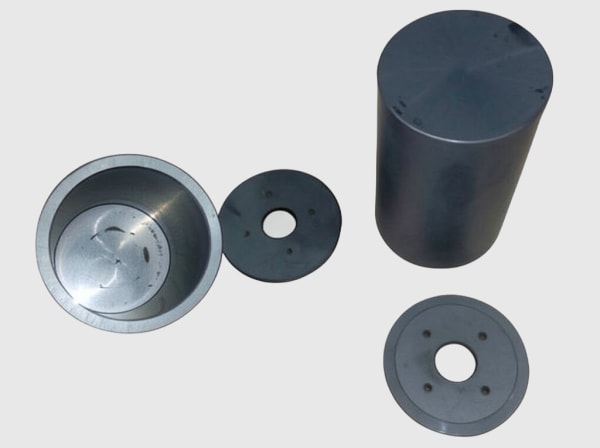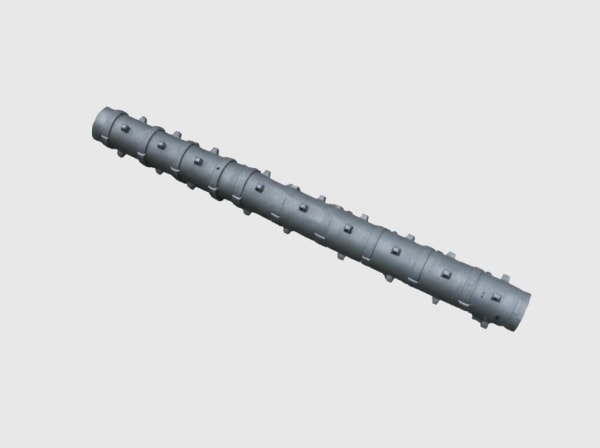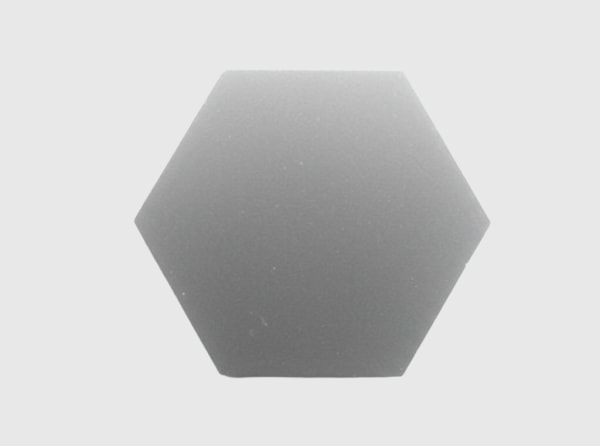Introduction: Powering the Future with Advanced Materials
The global transition towards sustainable energy sources is not just an environmental imperative; it’s a technological revolution. Renewable energy systems, such as solar photovoltaic (PV) farms, wind turbines, and the infrastructure supporting electric vehicles (EVs) and grid-scale energy storage, demand unprecedented levels of efficiency, reliability, and power density. Meeting these demands requires materials that push the boundaries of performance. Enter Silicon Carbide (SiC), a wide-bandgap (WBG) semiconductor material rapidly becoming indispensable in the renewable energy landscape. Unlike traditional silicon (Si), SiC offers superior electrical and thermal properties, enabling power electronics systems that are smaller, faster, lighter, and significantly more efficient. This blog post delves into the critical applications of custom silicon carbide components in renewable energy, exploring why this advanced ceramic is key to unlocking a cleaner, more sustainable energy future, and how partnering with experienced suppliers like CAS new materials (SicSino) can accelerate innovation in this vital sector.
Key Renewable Energy Applications: Where SiC Makes the Difference
Silicon Carbide isn’t just an incremental improvement; it’s a foundational technology enabling next-generation renewable energy systems. Its unique properties allow for significant advancements across various applications:
- Solar Power Systems: SiC is revolutionizing solar inverters, the crucial components converting DC power generated by PV panels into grid-compatible AC power.
- SiC-based Solar Inverters: Achieve higher conversion efficiencies (often exceeding 99%), meaning more harvested solar energy reaches the grid or end-user.
- Higher Switching Frequencies: Enable the use of smaller magnetic components (inductors, transformers) and capacitors, leading to significantly smaller, lighter, and less expensive inverter designs.
- Improved Thermal Performance: Allows operation at higher temperatures, reducing the size and cost of cooling systems (heatsinks, fans), enhancing reliability, especially in harsh outdoor environments.
- Target Keywords: SiC solar inverters, PV inverter efficiency, MPPT controllers, custom SiC power devices, renewable energy power conversion.
- Wind Power Generation: In wind turbines, SiC-based power converters manage the variable frequency power generated by the turbine and convert it for grid connection.
- Enhanced Converter Efficiency: Maximizes the energy captured from wind, improving the overall LCOE (Levelized Cost of Energy).
- Increased Power Density: Critical for offshore wind turbines where space and weight are at a premium within the nacelle. SiC allows for more compact and lighter converter systems.
- Greater Reliability: SiC’s robustness is advantageous in the demanding operating conditions of wind turbines, including temperature fluctuations and mechanical stress, leading to longer operational life and reduced maintenance.
- Target Keywords: SiC wind turbine converters, power conversion systems (PCS), offshore wind technology, high-power SiC modules, grid integration.
- Electric Vehicles (EVs) and Charging Infrastructure: SiC is a cornerstone technology for improving EV performance and accelerating charging times.
- On-Board Chargers (OBCs): SiC enables smaller, lighter, and more efficient OBCs, increasing vehicle range and packaging flexibility.
- Traction Inverters: SiC inverters controlling the main drive motor offer higher efficiency, contributing directly to longer driving ranges or allowing for smaller battery packs for the same range.
- DC Fast Chargers: SiC allows for much higher power levels (350kW and beyond) in charging stations, significantly reducing charging times. The higher efficiency also reduces electricity waste during charging and lowers operational costs for charging station operators.
- Target Keywords: SiC EV chargers, DC fast charging stations, SiC on-board chargers, EV traction inverters, automotive SiC MOSFETs.
- Energy Storage Systems (ESS) and Grid Integration: SiC plays a vital role in efficiently managing stored energy and integrating renewables into the power grid.
- Battery Management Systems (BMS) & Inverters: SiC improves the efficiency of bi-directional power flow in battery storage systems, crucial for both charging and discharging cycles.
- Grid-Tied Inverters: Ensure efficient and stable transfer of power between renewable sources/storage and the utility grid.
- Solid-State Transformers (SSTs): SiC enables the development of compact, efficient, and highly controllable SSTs, which are expected to be key components of future smart grids, facilitating better integration of distributed energy resources.
- Target Keywords: SiC energy storage systems, grid-tied converters, battery management systems, smart grid technology, solid-state transformers SiC.
Why Choose Silicon Carbide for Renewable Energy Systems? The Unmistakable Advantages
The adoption of SiC in demanding renewable energy applications stems from its fundamental material advantages over conventional silicon (Si). These benefits translate directly into improved system performance, reliability, and cost-effectiveness at the system level:
- Higher Energy Efficiency: SiC devices exhibit significantly lower switching and conduction losses. This means less energy is wasted as heat during power conversion, directly increasing the amount of usable energy delivered by solar panels or wind turbines, or extending EV range.
- Higher Operating Temperature Capability: SiC can reliably operate at junction temperatures exceeding 200∘C, compared to around 150−175∘C for Si. This tolerance reduces the requirements for bulky and costly thermal management systems (heatsinks, fans, liquid cooling), simplifying design and improving reliability in hot environments.
- Higher Voltage Operation: SiC possesses a breakdown electric field strength approximately 10 times higher than Si. This allows SiC devices to block much higher voltages for a given thickness, enabling simpler system architectures (e.g., using higher DC bus voltages in solar or EV systems) and reducing component counts.
- Higher Switching Frequencies: SiC devices can switch on and off much faster than Si counterparts (MHz range vs. kHz range). This capability allows designers to use significantly smaller, lighter, and less expensive passive components (inductors and capacitors), leading to dramatic increases in power density.
- Superior Thermal Conductivity: SiC conducts heat more effectively than Si, helping to dissipate the heat generated during operation more efficiently. This further aids in thermal management and enhances device reliability.
- Enhanced Reliability and Robustness: The strong atomic bonds in SiC make it a physically robust material, resistant to high temperatures and radiation, contributing to longer system lifetimes, especially crucial for infrastructure like wind farms or grid storage expected to operate for decades.
Table: Silicon Carbide (SiC) vs. Silicon (Si) for Power Electronics
| Property | Silicon (Si) | Silicon Carbide (SiC) | Impact on Renewable Energy Systems |
| Bandgap Energy | ~1.1 eV | ~3.2 eV | Higher breakdown voltage, higher operating temperature, lower leakage |
| Breakdown Electric Field | ~0.3 MV/cm | ~3 MV/cm | Higher voltage blocking capability, thinner drift regions, lower R_DS(on) |
| Thermal Conductivity | ~1.5 W/cm·K | ~3.7 W/cm·K (varies w/ type) | Better heat dissipation, simplified cooling, higher reliability |
| Electron Saturation Velocity | ~1 x 107 cm/s | ~2 x 107 cm/s | Higher switching frequencies possible |
| Max Operating Temperature | ~150−175∘C | > 200∘C (potentially higher) | Reduced cooling requirements, operation in harsh environments |
| Typical Switching Freq. | kHz range (IGBTs, MOSFETs) | High kHz to MHz range (MOSFETs) | Smaller passive components (inductors, capacitors), higher power density |
Export to Sheets
Recommended SiC Grades and Component Types for Renewable Applications
While SiC is a versatile material used in structural and abrasive applications, its use in renewable energy primarily revolves around its semiconductor properties for power electronics. Key components include:
- SiC MOSFETs (Metal-Oxide-Semiconductor Field-Effect Transistors): These are the dominant switching devices in modern SiC-based power converters. They offer low on-resistance (reducing conduction losses) and fast switching speeds (reducing switching losses). Available in various voltage ratings (e.g., 650V, 1200V, 1700V, and higher) suitable for different renewable applications. Custom SiC MOSFETs can be tailored for specific performance metrics.
- SiC Schottky Diodes: Often used as freewheeling diodes alongside Si IGBTs or SiC MOSFETs. They feature near-zero reverse recovery charge, which significantly reduces switching losses in the associated transistor, improving overall converter efficiency.
- SiC Power Modules: These integrate multiple SiC dice (MOSFETs and/or diodes) into a single package, often with optimized thermal interfaces and interconnects. Modules simplify system design, improve thermal performance, and enhance reliability. Options range from standard footprints to custom SiC module designs for specific power levels or layouts.
- N-type SiC Wafers: The foundational material upon which SiC devices are fabricated. High-quality wafers with low defect densities are crucial for producing reliable and high-performance MOSFETs and diodes. Suppliers like CAS new materials (SicSino), leveraging the expertise within the Weifang SiC hub, can ensure access to high-grade materials necessary for demanding power applications.
While less common in the power conversion path, other SiC forms might appear in renewable systems:
- SiC Ceramics (e.g., Sintered SiC, Reaction-Bonded SiC): Could be used for highly durable components in harsh environments like concentrated solar power (CSP) plants (e.g., heat exchangers, receiver tubes) or potentially structural elements in turbines where extreme temperature or wear resistance is needed.
Design Considerations for Implementing SiC in Renewable Energy Systems
Successfully leveraging SiC’s advantages requires careful design considerations that differ from traditional silicon-based approaches:
- Gate Drive Design: SiC MOSFETs require specific gate drive voltages (often asymmetric, e.g., +20V / -5V) and high peak currents due to their fast switching speeds. The gate driver circuit must be carefully designed to ensure reliable switching, manage voltage overshoots/undershoots, and prevent spurious turn-on. Optimized gate driver ICs are essential.
- Thermal Management: While SiC operates hotter, the increased power density means more heat is generated in a smaller area. Efficient thermal pathways from the SiC die to the ambient environment are critical. This involves selecting appropriate packaging, thermal interface materials (TIMs), and heatsink or cooling system designs. Advanced thermal simulation is often required.
- Circuit Layout and Parasitics: The high switching speeds (dV/dt, dI/dt) make SiC circuits very sensitive to parasitic inductance and capacitance in the PCB layout and component packaging. Minimizing loop inductances (especially in the power loop and gate drive loop) is crucial to reduce voltage spikes, ringing, and electromagnetic interference (EMI). Careful PCB layout techniques are paramount.
- EMI/EMC Management: Fast switching generates higher frequency harmonics, potentially increasing EMI. Effective filtering, shielding, and layout strategies are necessary to meet electromagnetic compatibility (EMC) standards.
- Short-Circuit Protection: Early SiC MOSFETs had limited short-circuit withstand times compared to Si IGBTs. Modern devices have improved significantly, but robust and fast-acting short-circuit detection and protection mechanisms remain essential design elements.
- System-Level Optimization: The full benefits of SiC are realized when the entire system is optimized around its capabilities – leveraging smaller passives, reduced cooling, and potentially higher DC bus voltages. Simply replacing Si devices with SiC in an existing topology may not yield optimal results.
Tolerance, Finishing, and Quality Control in SiC Power Devices
Ensuring the reliability and performance of SiC components in long-life renewable energy systems demands stringent quality control throughout the manufacturing process, from wafer to packaged device:
- Wafer Quality: The starting point is high-purity, low-defect density SiC substrates and epitaxial layers. Defects like micropipes, stacking faults, and basal plane dislocations can impact device yield, performance (e.g., leakage current), and long-term reliability. Rigorous incoming material inspection is key.
- Device Parameter Uniformity: Tight control over manufacturing processes is needed to ensure consistent device parameters (e.g., threshold voltage Vth, on-resistance RDS(on)) across wafers and batches. This is critical for paralleling devices in high-power modules.
- Die Singulation and Handling: SiC is harder and more brittle than Si, requiring specialized dicing techniques to avoid chipping or cracking the die, which could compromise reliability. Careful handling throughout assembly is essential.
- Packaging Integrity: The device package must protect the SiC die from environmental factors (moisture, contamination) and provide robust electrical and thermal connections. Quality control includes checking for voids in die attach or molding compounds, wire bond integrity, and package sealing.
- Reliability Testing: SiC devices undergo extensive reliability testing to qualify them for demanding applications. Key tests include:
- High-Temperature Reverse Bias (HTRB)
- High-Temperature Gate Bias (HTGB)
- Temperature Cycling (TC)
- Power Cycling
- Humidity tests (HAST, THB)
- Suppliers must provide comprehensive reliability data.
Post-Processing and Packaging for Performance and Reliability
The journey from a fabricated SiC wafer to a functional power device or module involves critical post-processing and packaging steps:
- Wafer Thinning and Back-Metalization: Wafers may be thinned to reduce thermal resistance and RDS(on), followed by deposition of metal layers on the backside for soldering or sintering during die attach.
- Die Attach: Attaching the SiC die to the substrate (e.g., Direct Bonded Copper – DBC) or lead frame. Common methods include soldering, silver sintering (preferred for high temperatures and reliability), or epoxy attach. Void-free attachment is critical for thermal performance.
- Interconnects: Connecting the top-side pads (gate, source) of the SiC die to the package leads or substrate. Wire bonding (Aluminum or Copper) is common, but advanced techniques like copper clips or direct lead attach are used in high-performance modules to reduce inductance and improve reliability.
- Encapsulation/Molding: Protecting the die and interconnects using transfer molding compounds (epoxies) or gel fills within module housings. The encapsulant must withstand high temperatures and provide environmental protection.
- Module Assembly: For power modules, multiple dice are integrated onto a common substrate, often with integrated temperature sensors or gate drive components, and enclosed in a standard or custom housing.
- Final Testing: Comprehensive electrical testing (static and dynamic parameters), thermal resistance measurements, and potentially burn-in are performed on packaged devices or modules to screen out early failures.
Common Challenges in SiC Implementation and How to Overcome Them
Despite its compelling advantages, deploying SiC technology, particularly in demanding renewable applications, presents challenges:
- Higher Initial Component Cost: SiC devices are currently more expensive than their Si counterparts due to complex crystal growth, smaller wafer sizes (though transitioning to 200mm), and lower yields historically.
- Mitigation: Focus on system-level cost savings (reduced cooling, smaller passives, higher efficiency). Costs are decreasing with higher volume production and technology maturation. Partnering with cost-competitive suppliers like those in the Weifang hub, such as CAS new materials (SicSino), can provide access to high-quality, affordable solutions.
- Gate Drive Complexity: As mentioned, SiC requires more sophisticated gate driver design than Si.
- Mitigation: Utilize commercially available SiC-specific gate driver ICs, follow manufacturer application notes carefully, and invest in careful layout design and simulation. Collaborating with suppliers offering technical support is beneficial.
- Reliability Demonstration in Harsh Environments: While inherently robust, demonstrating long-term reliability (20+ years) in the specific, often harsh, conditions of solar fields or offshore wind farms requires extensive testing and field data.
- Mitigation: Work with reputable suppliers who provide comprehensive reliability data and have a track record in demanding applications (e.g., automotive, industrial). Implement robust system-level monitoring and protection.
- Supply Chain Maturity and Availability: While improving rapidly, the SiC supply chain is less mature than silicon’s. Ensuring consistent supply of high-quality wafers and devices, especially for large-scale projects, requires careful supplier selection and relationship management.
- Mitigation: Partner with established suppliers with strong manufacturing capabilities and clear capacity roadmaps. Consider suppliers integrated into major manufacturing hubs, like CAS new materials (SicSino) within China’s Weifang SiC cluster, which represents over 80% of the nation’s SiC output, offering potential supply chain security.
How to Choose the Right SiC Supplier: Partnering for Success
Selecting the right supplier for SiC components is critical for project success, especially when custom silicon carbide solutions are needed. Key factors to evaluate include:
- Technical Expertise: Does the supplier have deep knowledge of SiC device physics, manufacturing processes, packaging, and application requirements, particularly in renewable energy? Look for strong R&D capabilities.
- Product Portfolio: Do they offer a relevant range of SiC MOSFETs, diodes, and power modules covering the required voltage and current ratings? Crucially, do they have custom SiC component capabilities?
- Manufacturing Capabilities & Quality Systems: Evaluate their wafer fabrication, assembly, and testing facilities. Are they certified to relevant quality standards (e.g., ISO 9001, IATF 16949 for automotive-grade reliability)? Can they scale production to meet your volume needs?
- Reliability Data and Track Record: Request comprehensive reliability reports and qualification data. Do they have experience supplying SiC devices for similar demanding applications?
- Customization and Technical Support: Can they provide tailored solutions (e.g., custom device parameters, unique packaging)? Do they offer strong application support, including simulation models, reference designs, and expert advice?
- Supply Chain Resilience and Location: Assess their supply chain stability and manufacturing footprint.
Why Consider CAS new materials (SicSino)?
For companies seeking high-quality, custom silicon carbide solutions, CAS new materials (SicSino) presents a compelling option:
- Strategic Location: Situated in Weifang City, the acknowledged hub of China’s SiC customizable parts manufacturing, providing access to a vast ecosystem and supply chain.
- Strong Backing: As part of the CAS (Weifang) Innovation Park and leveraging the scientific prowess of the Chinese Academy of Sciences (CAS), SicSino benefits from top-tier R&D capabilities and a robust talent pool.
- Deep Industry Involvement: Having introduced SiC production technology locally since 2015 and supported numerous enterprises, SicSino possesses deep practical knowledge of SiC manufacturing from materials to finished products.
- Customization Expertise: Possessing a wide array of technologies (material, process, design, measurement), they are well-equipped to meet diverse custom SiC component needs for renewable energy applications.
- Quality and Cost-Effectiveness: They offer access to higher-quality, cost-competitive customized SiC components within China, backed by domestic top-tier professional teams.
- Technology Transfer Services: Uniquely, SicSino can assist partners in establishing their own specialized SiC production facilities through comprehensive technology transfer and turnkey project services, ensuring reliable technology implementation and investment return. This demonstrates a profound level of expertise and commitment to the industry’s growth.
Partnering with a supplier like CAS new materials (SicSino), embedded within a major production hub and backed by significant R&D, can provide the reliable, high-performance, and often custom SiC solutions needed to excel in the competitive renewable energy market.
Cost Drivers and Lead Time Considerations for SiC Components
Understanding the factors influencing the cost and availability of SiC devices helps in planning and procurement for renewable energy projects:
- Key Cost Drivers:
- SiC Wafer Cost: The primary driver, influenced by wafer size (150mm vs. 200mm), quality (defect density), and the complexity of substrate and epitaxial growth.
- Die Size: Larger dice (for higher current ratings) mean fewer dice per wafer, increasing cost per device.
- Device Complexity: More complex structures or processing steps add cost.
- Packaging: Advanced packages (e.g., silver sintering, complex power modules) cost more than standard discrete packages.
- Testing and Qualification: Rigorous testing required for renewable or automotive applications adds to the final cost.
- Volume: Economies of scale significantly impact pricing; higher volumes lead to lower per-unit costs.
- Lead Time Factors:
- Wafer Availability: Subject to supply/demand dynamics in the SiC substrate market.
- Fab Capacity Utilization: High demand can lead to longer foundry lead times.
- Assembly and Test Time: Depends on package complexity and testing requirements.
- Customization: Custom devices or modules naturally have longer lead times due to design, tooling, and qualification cycles.
- Market Conditions: Overall semiconductor market fluctuations and supply chain disruptions can impact lead times.
Engaging with suppliers early in the design process and providing clear volume forecasts can help manage costs and secure supply.
Frequently Asked Questions (FAQ)
- Q1: Is Silicon Carbide technology mature and reliable enough for large-scale renewable energy projects like utility-scale solar farms or offshore wind?
- A1: Yes, SiC technology has matured significantly over the past decade. It is increasingly being adopted in commercial solar inverters, wind turbine converters, EV chargers, and industrial applications. Leading suppliers provide extensive reliability data demonstrating performance suitable for long-life infrastructure projects. Major renewable energy system manufacturers are actively designing SiC into their new platforms due to the proven benefits in efficiency, power density, and system-level cost savings.
- Q2: How does the total system cost using SiC compare to using traditional Silicon (Si) in renewable energy applications?
- A2: While individual SiC components are currently more expensive than their Si counterparts, using SiC often leads to a lower overall system cost. This is achieved through significant savings in other areas: reduced need for cooling systems (smaller heatsinks/fans), smaller and cheaper passive components (inductors, capacitors) due to higher frequency operation, potentially simpler system architectures, and higher energy yield/revenue due to increased efficiency over the system’s lifetime. The system-level benefits frequently outweigh the higher initial device cost.
- Q3: What specific advantages do custom SiC solutions from a supplier like CAS new materials (SicSino) offer for unique renewable energy challenges?
- A3: Standard SiC devices meet many needs, but custom SiC solutions offer tailored performance. For example, CAS new materials (SicSino) could potentially develop SiC MOSFETs with optimized RDS(on) vs. switching speed trade-offs for a specific inverter topology, design a power module with a unique footprint or enhanced thermal interface for a compact converter, or provide devices screened for specific reliability criteria needed in exceptionally harsh environments. Their deep expertise, backed by CAS and situated in the Weifang SiC hub, allows them to address unique engineering challenges and deliver components precisely matched to demanding renewable energy application requirements, potentially offering both performance and cost advantages through targeted design.
Conclusion: Silicon Carbide – Energizing the Renewable Revolution
Silicon Carbide is no longer a niche material; it is a critical enabler for the next generation of renewable energy systems. Its inherent advantages in efficiency, temperature handling, voltage capability, and switching speed directly address the core challenges of maximizing energy harvest, reducing system size and weight, and ensuring long-term reliability in solar, wind, EV charging, and energy storage applications. By enabling smaller, lighter, more efficient, and ultimately more cost-effective power conversion systems, custom silicon carbide components are accelerating the transition to a sustainable energy future.
Choosing the right partner is paramount to successfully navigating the adoption of SiC. Suppliers like CAS new materials (SicSino), combining deep technical expertise rooted in the Chinese Academy of Sciences, strategic positioning within China’s primary SiC manufacturing hub, and a focus on high-quality, cost-effective custom solutions, stand ready to assist engineers, procurement managers, and OEMs. Whether you need optimized standard components, fully customized SiC devices, or even support in establishing your own production capabilities, leveraging the right expertise will be key to harnessing the full potential of silicon carbide and powering a cleaner world.
Contact CAS new materials (SicSino) today to discuss your custom silicon carbide requirements for your next renewable energy project.






